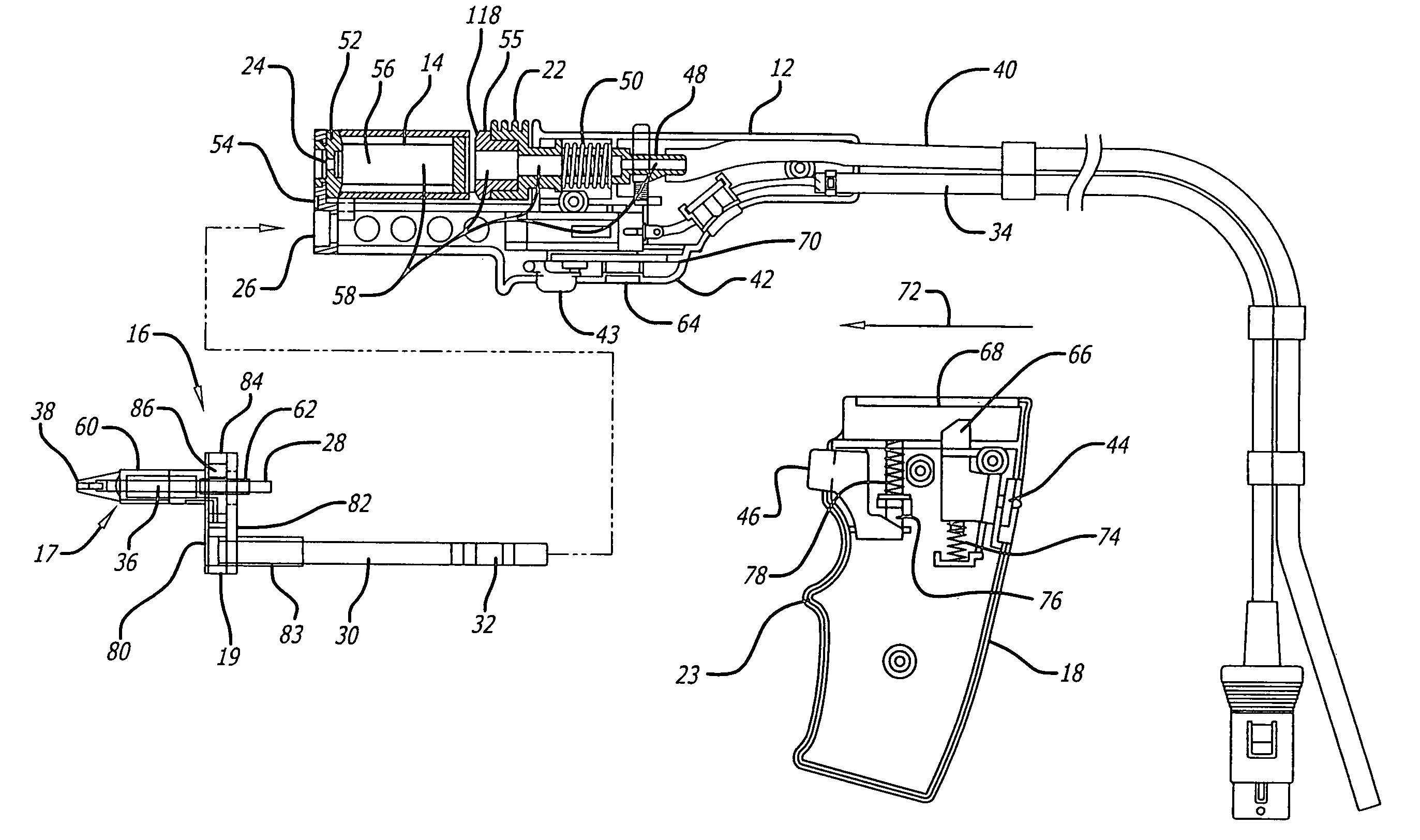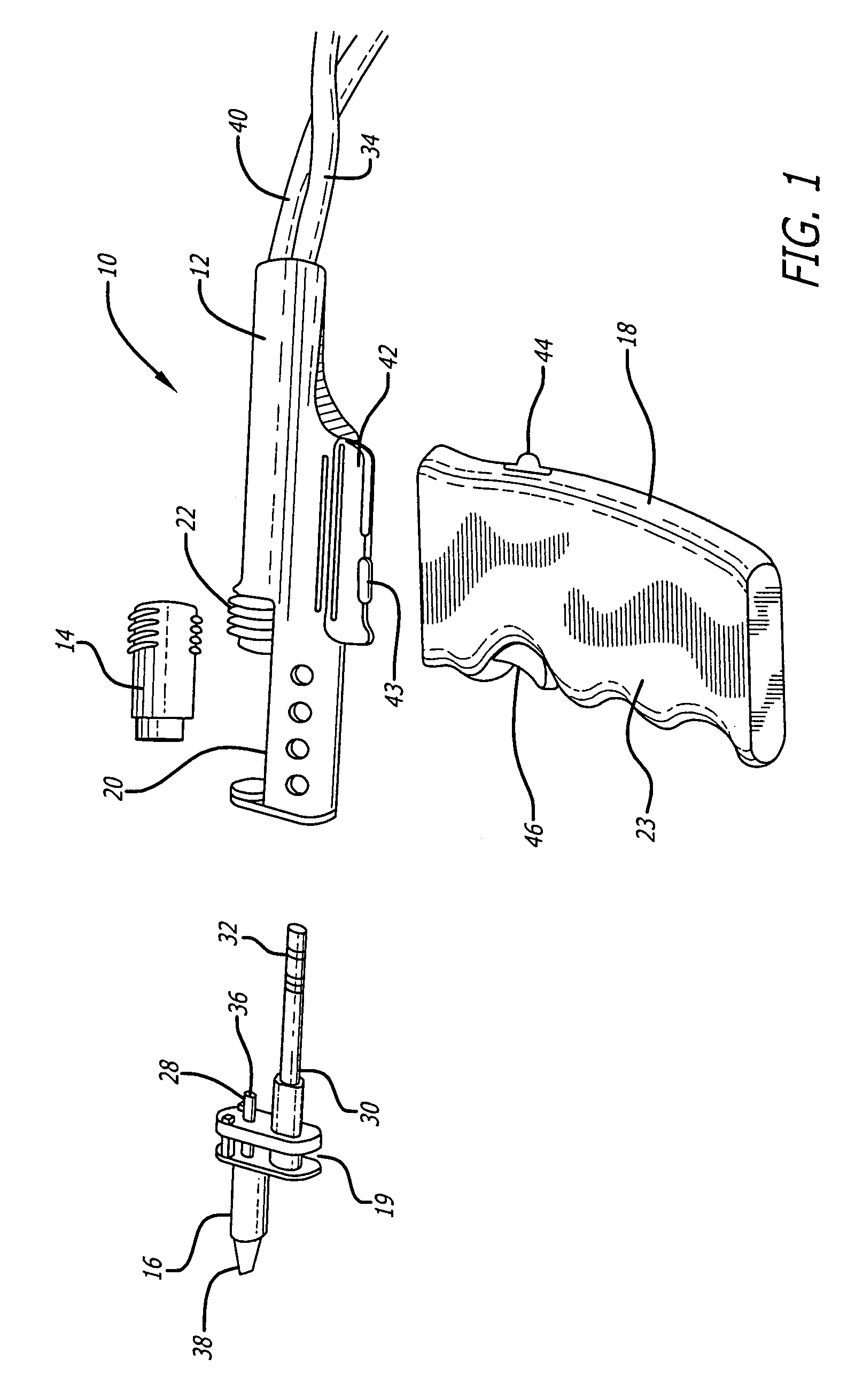Solder heating system
a heating system and a technology of asolder, applied in the direction of metal working equipment, manufacturing tools, and soldering apparatus, can solve the problems of clogging of the vacuum source, shortening the desoldering operation, and requiring frequent cleaning or changing of the solder collection chamber, so as to minimize the resistance to prevent the flow of melted solder. , the effect of easy replacement and maintenance of the desoldering tool
- Summary
- Abstract
- Description
- Claims
- Application Information
AI Technical Summary
Benefits of technology
Problems solved by technology
Method used
Image
Examples
Embodiment Construction
[0037]FIG. 1 illustrates a heating system show generally at 10 including a first handle 12 adapted to releaseably couple to a storage 14, a heater cartridge 16, and a second handle 18. The first handle 12 has a cavity 20 that may be formed near the heater cartridge 16. To engage the storage 14 within the cavity 20, the first handle 12 may have a back holder 22 that may move between a first position and a second position. In the first position, the length of the cavity 20 may be longer than the length of the storage 14 along the longitudinal direction of the first handle 12; whereas in the second position, the length of the cavity 20 may be similar or slightly less than the length of the storage 14. As such, when the back holder 22 is in the first position, the storage 14 may be inserted or removed from the cavity 20. To engage the storage 14 within the cavity 20, the back holder 22 may be moved from the first position to the second position so that the storage 14 may be held within ...
PUM
| Property | Measurement | Unit |
|---|---|---|
| melting | aaaaa | aaaaa |
| longitudinal length | aaaaa | aaaaa |
| length | aaaaa | aaaaa |
Abstract
Description
Claims
Application Information
 Login to View More
Login to View More - R&D
- Intellectual Property
- Life Sciences
- Materials
- Tech Scout
- Unparalleled Data Quality
- Higher Quality Content
- 60% Fewer Hallucinations
Browse by: Latest US Patents, China's latest patents, Technical Efficacy Thesaurus, Application Domain, Technology Topic, Popular Technical Reports.
© 2025 PatSnap. All rights reserved.Legal|Privacy policy|Modern Slavery Act Transparency Statement|Sitemap|About US| Contact US: help@patsnap.com



